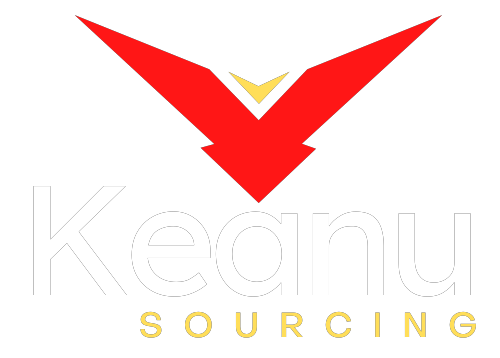Hey, fellow small company entrepreneurs! Let us discuss something vital for the lifetime and success of our businesses: development. Everybody wants to see our companies grow, reach more people, and have more influence. Still, growth is not random. It calls for wise, calculated expenditures.
One may easily get overwhelmed. Between running daily operations, maintaining customer satisfaction, and—you know—sometimes sleeping, considering long-term investment plans might feel like a luxury. Still, I can assure you it’s very necessary. Smart investments are like the nutrients your company’s garden needs to bloom; they are the fertiliser.
This is not about squandering money at every glitzy possibility. It’s about knowing your company requirements, making wise judgments, and selecting investment paths consistent with your objectives. So, let’s explore some clever investing ideas that can allow your small business to survive and flourish!
1. Invest in Your Team and Yourself—Human Capital is King!
Look inward before you ever consider outside investments. Your people—including yourself—are your most valuable tool.
- Development of Skills: The corporate scene is changing continuously. New technologies surface, consumer tastes evolve, and best practices alter. First and most importantly is investing in your team’s and your training and development. Online courses like an instrumentation course, seminars, trade shows, or even hiring a consultant to offer specific training might all fit here.
- Customer Well-Being: A productive team is happy and healthy. Think about funding staff wellness initiatives, ergonomic workstation design, or even mental health support. Though they seem “soft,” these expenditures directly affect morale, output, and staff retention. Recall that replacing a staff person could be considerably more costly than supporting their well-being.
- Leadership Training: Invest in the leadership abilities of any managers or team leaders you have. A good work atmosphere, team motivation, and performance-driving capability all depend on effective leadership. Strong leaders can assist you in seizing possibilities and negotiating obstacles.
2. Accept Technology—Don’t Get Left Behind!

Regardless of size, technology is now a “must-have” not a “nice-to-have” for every company. Investments in smart technologies can help to simplify processes, raise productivity, and increase customer experience.
- Customer Relationship Management (CRM) Software: Good CRM systems may help you monitor leads, control customer contacts, run automated marketing campaigns, and learn a great deal about consumer behaviour. This lets you customise your correspondence, raise client service, and eventually boost revenue.
- Project Management Tools: Handling jobs and projects as your company expands may get taxing. Like Asana, Trello, or Monday.com, project management tools let you track development, allocate tasks, arrange processes, and guarantee deadlines are reached.
- Cloud Computing: Solutions based on cloud computing provide scalability, adaptability, and economy of cost. From anywhere, you can access your data and apps, work with your team in real time, and save the significant upfront expenses of conventional IT infrastructure.
- E-commerce Platform: If you are offering goods or services, you really must have a strong e-commerce platform. Online stores can be quickly set up, inventory can be managed, payments can be handled, and a larger audience can be accessed using sites like Shopify, WooCommerce, or Squarespace.
- Automation: Look at places where you may be able to apply automation. Your email marketing, social media, or bookkeeping could all help here.
3. Sales and Marketing (Fuelling the Engine of Development)
Even if you have the finest good or service available, your company won’t expand if nobody other know about it. Attracting new customers and keeping current ones depends on wise marketing and sales investments.
- Digital Marketing: A Strong online presence is vital in the digital era of today. Invest in a well-designed website, search engine optimisation (SEO), social media marketing, and paid advertising—akin to Google advertisements or social media advertisements. Targeting certain groups, tracking your outcomes, and streamlining your efforts for best effect are just three ways digital marketing lets you do.
- Content Marketing: Developing worthwhile and interesting material (such as blog entries, films, infographics, or podcasts) will draw in potential clients, help to demonstrate your knowledge, and foster brand loyalty. Over time, content marketing is a long-term approach that may pay off dramatically.
- Sales Training: Invest in the training of your sales crew, should one exist. Give them the tools they need to properly present your value offer, address concerns, and conclude transactions.
- Programmes for Customer Loyalty: Oftentimes, keeping current clients is more affordable than attracting new ones. To honour returning business and inspire client advocacy, think about starting a loyalty programme.
4. Financial Contributions (Future Planning)
Although the earlier parts concentrated on operational expenditures, it’s also crucial to take into account simply financial investments meant to support the stability and long-term expansion of your company.
- Emergency Fund: Before making any significant investments, be sure your emergency fund is strong. This will offer a safety net to help you negotiate difficult times or cover unanticipated costs without endangering the running of your company.
- High-Yield Savings Account or Short-Term Investments: Once you have an emergency fund, think about adding any extra money to a low-risk, short-term investment or high-yield savings account. This will let your money grow while yet being somewhat easily available.
- See a professional for advice: Looking for direction from a financial advisor Sydney will truly start the ball rolling and help your company to be on the correct road.
- Retirement Planning: Remember your future as well as retirement planning. Beginning early, start helping with a retirement plan—such as a SEP IRA or Solo 401(k). This not only guarantees your financial future but also could help your company with taxes.
- Diversification: Investing in stocks, bonds, or other assets calls for diversification—that is, not putting all your eggs in one basket. Diverse asset class distribution of your assets might assist in reducing risk. Consider including alternative assets, such as investing in gold, which can provide a hedge against inflation and market volatility while balancing your portfolio.
5. Strategic Alliances Utilising Outside Resources

Sometimes, the best approach for development is teamwork. Strategic alliances may provide you access to resources, technology, knowledge, and new markets you would not have on your own.
- Identify Complementary Businesses: Look for companies that provide goods or services that complement yours. If you are a wedding photographer, for instance, you may team with a caterer, floral designer, or wedding coordinator.
- Joint Ventures: Consider joint ventures where you work on a certain project or product introduction with another company. You may then distribute expenses, risks, and rewards.
- Afford Marketing: In return for a commission on sales, team with other companies or celebrities to advertise your goods or services.
6. Reinvesting Earnings (Compounding’s Power)
Just reinvesting your earnings back into the company is among the most effective investment plans available for small company expansion. This starts a vicious cycle: earnings support additional investments, which then produce yet greater profits.
- Prioritize Growth Areas: Sort the regions of your company according to highest growth potential and distribute your reinvested earnings to them. This may be broadening your product range, adding additional employees, raising your marketing budget, or funding new technologies.
- Track Your ROI on Investment: Track your investments to be sure they are producing the anticipated returns whenever you make one. This will enable you to decide with knowledge on future resource allocation.
In Essence: Start Small, Think Big, and Keep Consistent.
Smart investing is not about one large, spectacular action. It’s about making consistent, educated choices. Start small, concentrate on the areas most likely to affect your company, and don’t hesitate to try new ideas.
Recall that every company is different, hence, a one-size-fits-all solution is not available. The secret is to know your demands, objectives, and resources and then modify your investing plans.








